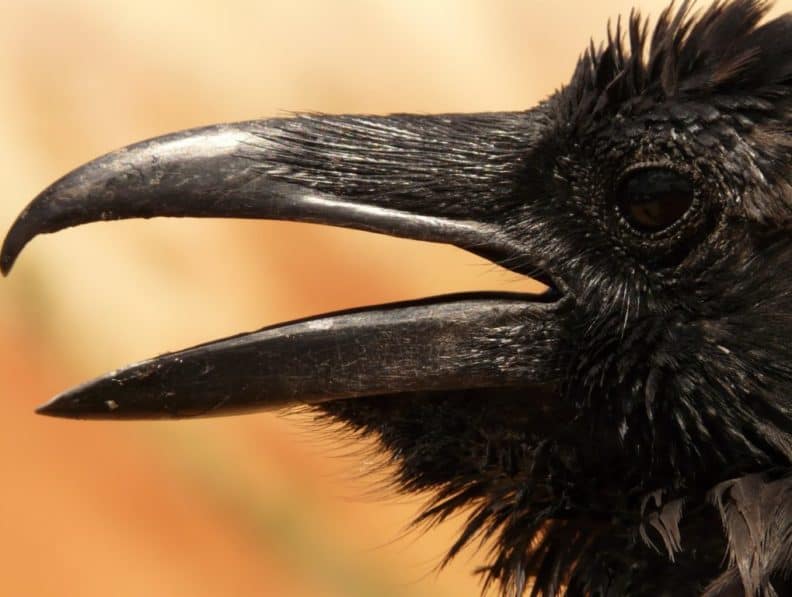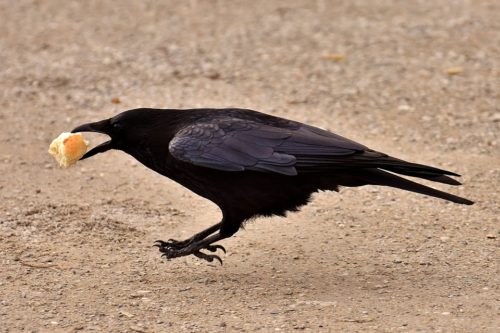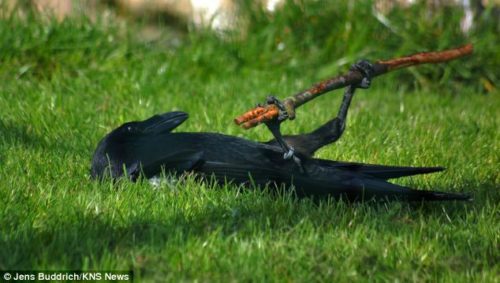
The Birth of Curiosity: Through the Eyes of a Raven Part I
By Jennifer O’Toole, graduate student in the Institute’s 16th cohort.
Curiosity is born from one of the most unlikely of places: boredom. I used to fight the feeling of boredom, as I had been trained to do by the media with its constant barrage of entertainment, the internet with its never-ending information and by my own relentless drive to be productive. But one day I decided to try something different. I was trying to write a lesson plan for my 3rd grade science class the following day and found myself feeling bored with the work. I stopped typing and decided to let the feeling of boredom wash over me, accepting that I was bored instead of rejecting it. I decided to trust that, if I stewed long enough within my boredom, a flicker of curiosity would ignite and reinvigorate my brain to continue its productivity. A few minutes later I heard the pitter-patter of rain starting on my roof and my mind wandered to water as I noted the feeling of comfort that crept over me as I listened. I thought of splashing in the puddles, racing homemade boats down drainage ditches and allowing myself to become soaked. I had a strong desire suddenly to relive the feeling of joy and freedom created in that memory and—curious, now—looked to see what weather was predicted for the following day. More rain! It was decided: my students and I were going outside to play and explore water physics tomorrow.
I have felt, during my 10 years as an educator, the forceful squashing of curiosity. Instead of allowing the space my students need to get used to the boredom necessary to discover their own interests and then pursue them, the curriculum I must strictly shove down the often disinterested throats of my students is so jam packed I haven’t the time to get through half of what I’m expected to. My students must be able to regurgitate the correct answers to the specific questions they must know to pass the tests that will determine the level of stress they will endure for the remainder of the school year. The students who fail to “perform well on” the state and national exams (selecting one too many incorrect multiple choice answers while staring at a computer screen for hours is now considered a form of “performing”) face years of potential medicating, tutoring, extra homework and ridicule from other students. It’s no wonder under such stressed conditions that a child’s ability to perform creatively, focused on topics that interest them, is significantly diminished. I found myself searching for ways to nurture curiosity in my mentoring (I no longer use the word teaching, as it implies something being done to the student as opposed to with them), which I found meant significantly less control on my part and much more on that of the students.

Photo of raven stealing food. Image courtesy of Pixabay
Recently given an assignment (as a graduate student studying environmental education) to research something under the umbrella of natural history, I had the idea of studying an animal that I have personally seen to show large amounts of curiosity: Elvis. Elvis is a raven that is often seen involved in trickery around the North Cascades Institute Environmental Learning Center, in the national park I currently live in. Whether it’s opening zippers to steal food from backpacks or making raucous amounts of noise at inopportune moments, Elvis is now a beloved member of our North Cascades Environmental Learning Center community.
It didn’t take me long to become entranced by these incredibly curious birds, discovering them to be the catalyst that would point me in the direction of healthier education.
Corvus corvax, the common raven, is in the corvid family, which includes crows, jays, magpies and nutcrackers; all share a trademark capacity for curiosity. Bernd Heinrich, author of Mind of the Raven, believes curiosity is the key that has allowed them to flourish and diversify.

“They say curiosity killed the cat, but curiosity is also adaptive, provided it is backed up with good judgment” – Bernd Heinrich Image courtesy of Jens Buddrich
Ravens adaptability allows them to live in a variety of habitats, from snow to desert to mountains to forests and, due to having few predators, can live up to seventeen years in the wild and over 40 in captivity. Because of their natural curiosity, ravens have adapted to discover unexpected and rare food items and tools that have helped them survive, and this starts right away at birth. Ravens are natural explorers and scavengers with a huge diet that includes fish, meat, seeds, fruit, carrion, and garbage. They are attracted to whatever they see around their nest, exposing them to all items in their environment.
Their inherent curiosity brings learning that shapes their identity and starts the attraction that ravens have to novel items, which is vital for their learning.
“If the birds were attracted to objects merely because they were already known to be good food, then what they already knew would be known even better, but nothing would be discovered.” –Bernd Heinrich
Curiosity at birth starts a raven’s education; as every parent knows, one of the most important factors in the learning process is simply exposing children to what is important. Exposure determines what will, as opposed to what could be learned. The other part is nurturing the natural learning tendencies that young are born with, like curiosity. There are three others that have been found in all animal learning: playfulness, sociability and planfulness. These educative drives are pivotal for all animals, including humans, but I will highlight them through the eyes of a raven.
To be continued in Part Two: Animal Natural Learning Tendencies: Through the Eyes of a Raven
Title image courtesy of Pixabay

